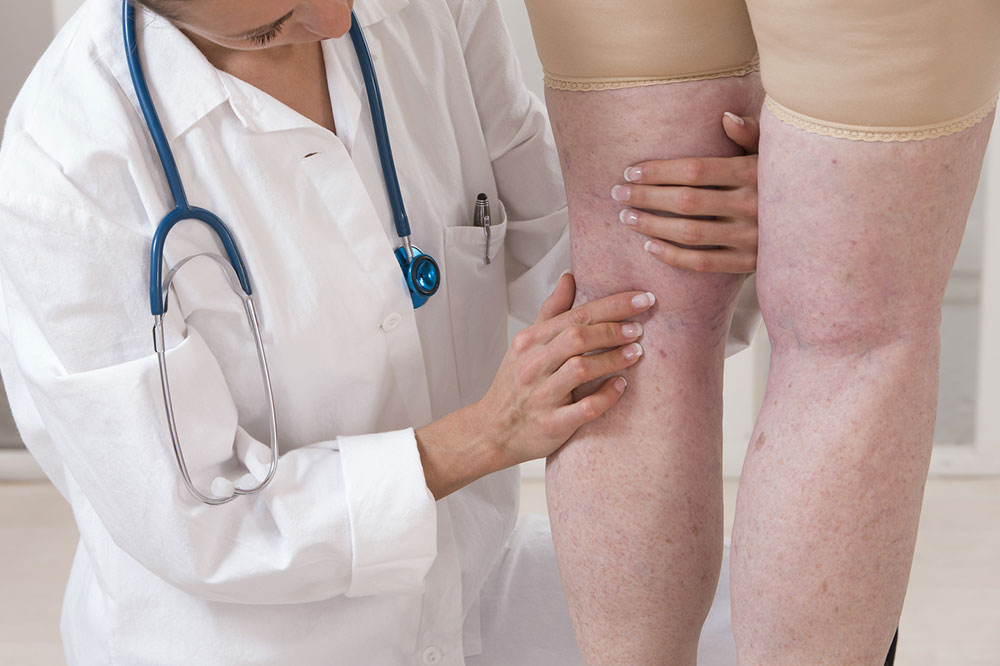
Varicose veins – Causes, symptoms, management, and prevention
Varicose veins are a common condition in which the veins become enlarged, raised, and often twisted and rope-like. These veins are generally seen on the legs but can occur elsewhere throughout the body. They can cause pain ranging from mild to severe and physical discomfort due to their appearance. Let’s take a look at what causes varicose veins, the associated symptoms, various treatment options available, and ways to prevent varicose veins from forming.
What causes varicose veins?
Varicose veins can be frustrating and uncomfortable, but understanding the causes can help prevent and treat the condition. A variety of factors can contribute to varicose veins, including:
- Age : As we age, the valves in our veins can weaken and become less efficient, causing blood to pool in the veins and resulting in varicose veins.
- Genetics : The condition can be hereditary, so if one’s family has a history of varicose veins, one may be more prone to developing them.
- Hormones : Hormonal changes, such as pregnancy, menopause, or taking certain treatment options, can affect the vein walls and valves and lead to varicose veins.
- Inactivity : Sitting or standing for long periods can make it difficult for blood to flow correctly through the veins, leading to varicose veins.
What are the symptoms?
Varicose veins are swollen, twisted, and bulging veins that appear on the legs and feet, causing discomfort and pain. Here are the common symptoms that can help one identify the condition.
- Blue or purple veins on the legs or fee.
- Bulging or twisted veins
- Pain or heaviness in the legs
- Burning or throbbing sensation in the legs
- Swelling in the legs, ankles, and feet
- Muscle cramps, especially at night
- Itchy skin over the veins
Diagnosis
Diagnosing varicose veins is vital for developing a proper treatment plan and preventing further complications. There are various methods used for the diagnosis, which include:
- Physical examination : The doctor will examine the affected area and look for signs of varicose veins, such as bulging veins and skin discoloration.
- Medical history : The doctor will ask about one’s medical history, including any symptoms they have been experiencing and any risk factors they may have for developing varicose veins.
- Ultrasound : This test uses high-frequency sound waves to create images of the blood flow in one’s veins. It can help the doctor determine the location and severity of the varicose veins.
- Venogram : This test involves putting a dye into the veins and taking X-rays to show the blood flow and any blockages in the veins.
Treatment options
There are several treatment options available, depending on the severity of one’s condition. Some common treatment options include:
- Compression stockings : These special stockings help improve circulation in one’s legs by applying pressure. They’re often the first line of treatment for mild cases of varicose veins.
- Sclerotherapy : In this treatment, a solution is put into the affected veins, causing them to collapse and eventually disappear. It’s a relatively painless procedure and can be done in one’s doctor’s clinic.
- Endovenous laser therapy (EVLT) : This treatment uses laser energy to seal off the affected veins, which then fade away over time. It is a minimally invasive procedure.
- Vein stripping and ligation : This surgical procedure involves tying off and removing the affected veins. It is typically reserved for more severe cases of varicose veins.
Can varicose veins be prevented?
While certain risk factors may make one more likely to develop varicose veins, one can take certain steps to reduce the risk.
- Following a healthy lifestyle is one of the best ways to prevent varicose veins. It is difficult for blood to flow correctly when one leads a sedentary lifestyle due to the added pressure on the veins. Incorporating regular exercise into one’s daily routine can also help to improve circulation and prevent blood from pooling in the veins.
- Another way to prevent varicose veins is to avoid prolonged periods of sitting or standing. If one’s job requires one to sit or stand for long periods, it is important to take frequent breaks and stretch the legs. Elevating one’s feet whenever possible can also help reduce the pressure on their veins.
- Wearing compression stockings can also help prevent varicose veins by supporting one’s veins and improving circulation. These special stockings apply pressure to one’s legs, helping to promote blood flow and prevent blood from pooling in their veins.
By maintaining healthy habits and managing the risk factors, one can reduce the chances of developing varicose veins and improve their overall vascular health.




